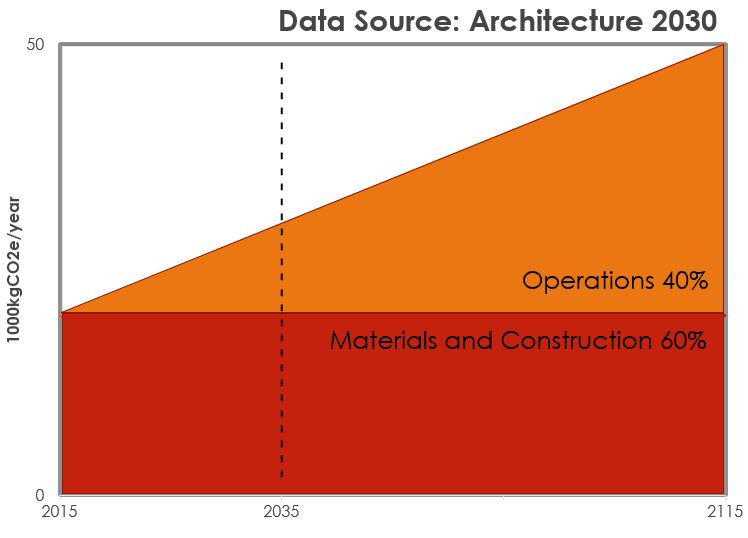WHAT IS EMBODIED CARBON?
The emissions that come from the extraction, transportation to the factory, and the manufacturing of the building materials themselves are known as embodied carbon emissions or “cradle to gate” emissions. These are the emissions that come before materials even get to a job site, which means that they already exist in the atmosphere at the time construction begins. These emissions actually account for 60-90% of the total carbon emissions of the building’s full life cycle and operational emissions accrue on top of this baseline.

WHY DOES IT MATTER?
As we strive to build homes that are more energy efficient, we often use materials with high embodied carbon in order to achieve savings on operational emissions.* Factoring in the embodied carbon of the materials themselves allows us to capture the "low hanging fruit" of up-front carbon savings, which we don't have to wait decades to realize. This is a critical step if we want to reach the global carbon targets needed to reverse climate change by 2030.
* We are unintentionally shooting ourselves in the foot(print)!
WHAT NEEDS TO HAPPEN?
If we want to be able to dial in on embodied carbon targets along with operational targets and to design buildings that not only minimize embodied carbon, but actually store carbon in building materials, we need to establish an Embodied Carbon Index alongside the HERS Index. In order to do this, we must create a new RESNET Standard. And in order to show a broad base of support for the creation of such a Standard, WE NEED YOUR HELP!
If included in the RESNET Standards, an Embodied Carbon Index would become part of what is already the gold standard for home energy assessments in the US residential home market. It could transform the HERS Industry into an even more powerful engine for tackling climate change within the next 10 years and will help to ensure that we have a livable planet for generations to come.
WHAT CAN I DO?
- Share the Massachusetts 100-Home Study with your network!
- If you would like to receive special updates about actions you can take to support the next steps for Embodied Carbon, please email Betsy at betsy@nehers.org so that we can add you to the list of supporters.